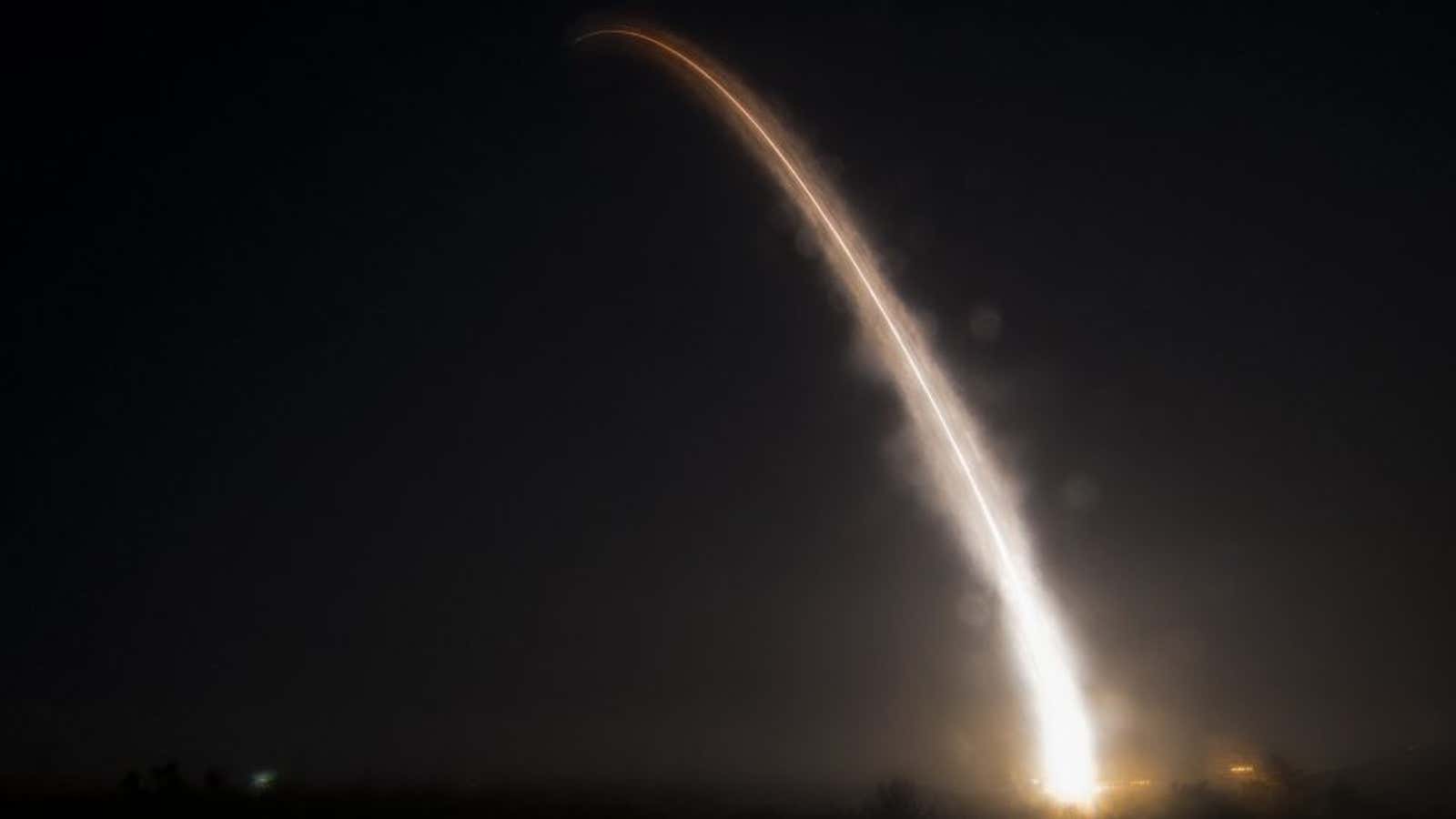In the three months following US president Donald Trump’s announcement last October that America would suspend its participation in the decades-old Intermediate Nuclear Forces (INF) treaty, his administration has signed roughly $1 billion in new ballistic missile contracts.
The new missiles would guarantee a usable US nuclear arsenal through at least 2075, according to a new study released today by Pax, a Dutch nonprofit that promotes peace and reconciliation. Including the United States, there are nine known nuclear-armed nations in the world, which currently account for active ballistic missile contracts totaling approximately $116 billion.
“The research confirms that there is a new nuclear arms race happening,” Susi Snyder, the report’s lead author, tells Quartz.
The INF, an arms control pact that banned the development and use of medium-range missiles, reversed a dangerous buildup of US and Soviet nuclear weapons in Europe during the Cold War. It was signed in 1987 between US president Ronald Reagan and Soviet premier Mikhail Gorbachev in order to remove one of the most volatile flash points that could have led to nuclear war.
Last year, the US said Russia had 180 days to verifiably destroy its ground-based SSC-8 missile system—which the Obama administration first flagged in 2013 as a violation of the treaty—or the US would withdraw from the treaty completely.
Who benefits?
“What does this say to the rest of the world?” asks Snyder. “That everybody should be buying new missiles.”
Snyder, who has served as Pax’s nuclear disarmament program manager since 2010, says she knows from experience that these contracts tend to exceed their initial budgets, and that the ones identified by Pax will only grow larger. She says it is unknown what percentage of the new contracts are directly tied to nuclear weapons production, but “what is clear is that there is a new rush towards building more missiles that benefit a handful of US companies and intend to flood the market with missiles regardless of their range.”
Raytheon spokesman Mike Doble told Quartz that “zero percent” of its 44 missile contracts were nuclear-related. Jerry Drelling of Boeing Space and Missile Systems directed Quartz to a DoD contracting website but declined to provide further specifics. Lockheed Martin acknowledged Quartz’s request but did not follow up with a statement. Northrop Grumman and BAE did not respond to a request for comment.
Reputation risks
Nuclear missiles, especially those which increase the risk of retaliation like the medium-range weapons covered by the INF, actually weaken the safety of America and its allies, Snyder argues. She believes the new missile contracts spotlighted by Pax will do little more than “bloat a few pockets and tell shareholders, ‘Hey, you’re gonna get a good return on your investment this year.’”
Defense contractors often face blowback from investors who object to their role in making weapons of mass destruction. In 2016, the city of Cambridge, Massachusetts pulled $1 billion tied to nuclear weapons manufacturing from its investment fund, including a stake in Honeywell International, which produces components for the US Navy’s Trident II missile system.
It has worked before, explains Snyder. Although the United States never signed on to the Convention on Cluster Munitions, the 2008 treaty that prohibits the manufacture and use of cluster munitions, Lockheed Martin stopped production in 2013 after several countries and international banks said they would no longer invest in companies that manufactured them.
Snyder says public pressure forces firms to assess the “reputational and regulatory risks of continued exposure.” It will take some time, but Snyder remains optimistic.
“Everyone wants to make money, but not on a product that can end the future for everyone,” she says. “This is a snapshot of a very troubling time, and it’s a warning that we have to do something before it’s too late.”
